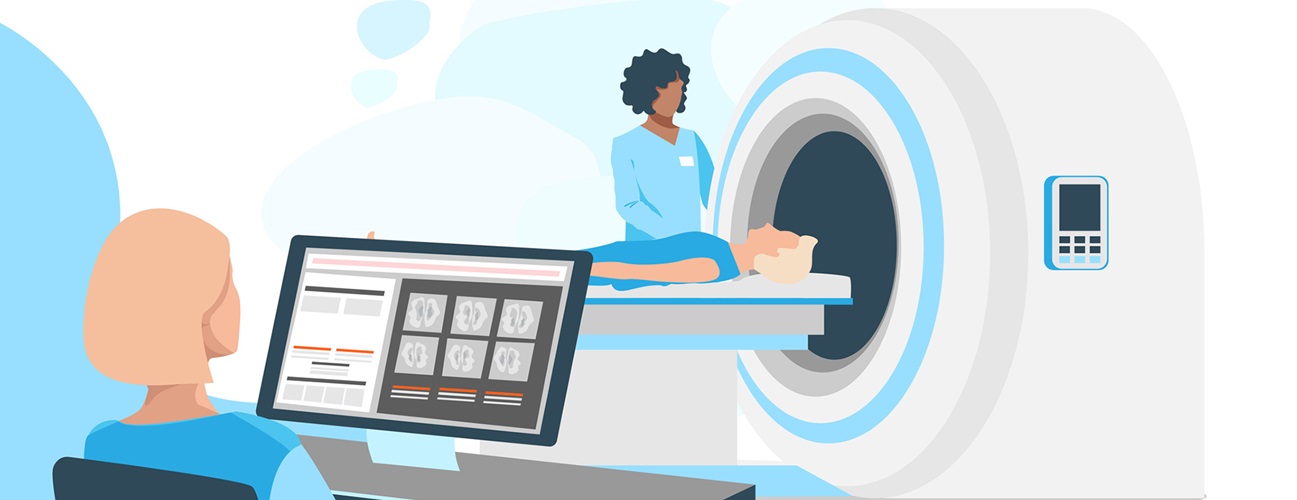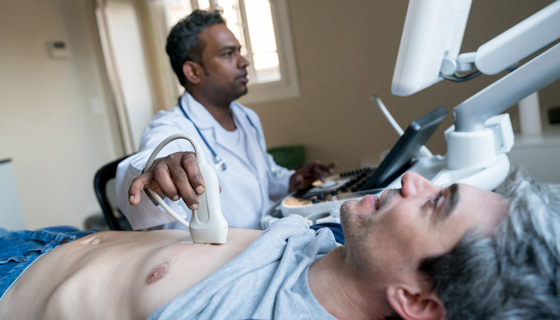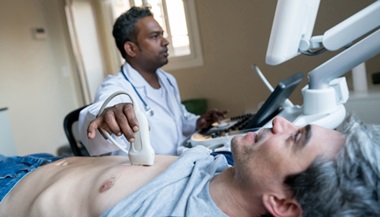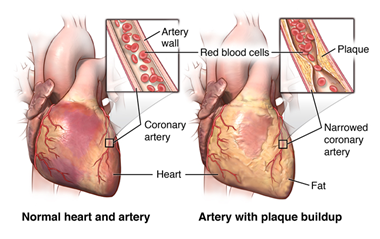Computed Tomography Angiography (CTA)
Featured Expert:
What is computed tomography (CT) angiography?
CT angiography is a type of medical test that combines a CT scan with an injection of a special dye to produce pictures of blood vessels and tissues in a part of your body. The dye is injected through an intravenous (IV) line placed in your arm or hand.
A computerized tomography scan, or CT scan, is a type of X-ray that uses a computer to make cross-sectional images of your body. The dye injected to perform CT angiography is called a contrast material because it enhances blood vessels and tissues that are being studied.
Why might I need a computed tomography angiography?
- To find or measure the size of an aneurysm (a blood vessel that has become enlarged and may be in danger of rupturing)
- To find blood vessels that have become narrowed by atherosclerosis (fatty material that forms plaques in the walls of arteries)
- To follow vessels involved by dissections, which are tears that can form in the wall of vessels
- To find abnormal blood vessel formations inside your brain
- To identify blood vessels damaged by injury
- To find blood clots that may have formed in your leg veins and traveled into your lungs
- To evaluate a tumor that is fed by blood vessels
Information from CT angiography may help prevent a stroke or a heart attack. This type of test may also help your health care provider plan cancer treatment or prepare you for a kidney transplant. Your health care provider may have other reasons for ordering this test.
What are the risks of computed tomography angiography?
The amount of radiation used during CT angiography is considered minimal, so the risk of radiation exposure is low. There is always a theoretical risk with exposure to radiation, but the benefits of getting an accurate diagnosis generally outweigh the risks. No radiation remains in your body after a CT scan.
Other risks include:
- Allergic reactions. Always let your radiologist know if you have any history of allergies or an allergy to contrast material. Reactions to contrast are uncommon. If you have any history of allergic reactions to contrast in the past, you may be given medicine to lessen the risk for an allergic reaction before the test.
- Tissue damage. If a large amount of contrast material leaks into the tissues around your IV site, it can irritate your skin or the blood vessels and nerves just under your skin. It is important to tell your radiologist or radiology technologist if you have any pain when the contrast material is injected through your IV.
Angiography contrast material is safe for the kidneys in people with normal or mildly abnormal renal function. However, it may not be recommended in someone with severe kidney disease.
There may be other risks, depending on your specific medical condition. Be sure to discuss any concerns with your health care provider or radiology technologist before the test.
How do I prepare for computed tomography angiography?
Precautions: If you are pregnant or think you may be pregnant, please check with your doctor before scheduling the exam. Other options will be discussed with you and your doctor.
Clothing: You may be asked to change into a patient gown. If so, a gown will be provided for you. Please remove all piercings and leave all jewelry and valuables at home.
Contrast media: CT scans are most frequently done with and without a contrast media. The contrast media improves the radiologist’s ability to find structures that are abnormal.
- Some patients should not have an iodine-based contrast media. If you have problems with your kidney function, please inform us in advance. Some patients with risk factors for kidney disease may require testing prior to the CT scan to check how well their kidneys are working before giving contrast. If tests show renal function is very poor, we may be able to perform the scan without the contrast media or find an alternate imaging exam.
Allergy: Please inform the access center representative when you schedule your scan if you have had an allergic reaction to any contrast media. IV contrast will usually not be administered if you have had an anaphylactic reaction to any contrast media in the past. Mild to moderate reactions require taking medication, usually steroids, for a short time prior to theCT examination. These plans will be discussed with you in detail when you schedule your exam. Any known reactions to a contrast media should be discussed with your personal physician.
Eat/drink: If your study was ordered without contrast, you can eat, drink and take your prescribed medications prior to your exam. If your doctor orders a CT scan with contrast, do not eat anything three hours before your CT scan. You are encouraged to drink clear liquids. You may also take your prescribed medications prior to your exam. This exam may require you to drink an oral contrast solution.
- If you are undergoing a chest/cardiac CTA, do not consume any caffeine or exercise three hours prior to your appointment. No erectile dysfunction medication for 48 hours before your test.
Diabetics: Diabetics should eat a light breakfast or lunch three hours prior to the scan time. Depending on your oral medication for diabetes, you may be asked to discontinue use of the medication for 48 hours after the CT examination. Detailed instructions will be given following your examination.
Medication: All patients can take their prescribed medications as usual.
Based on your medical condition, your doctor may request other specific preparation.
What happens during computed tomography angiography?
You may have this test done at a hospital or at another outpatient facility. The CT scanner is a large machine with a short tunnel that the examining table passes in and out of. Tests may vary depending on your condition and your health care provider's practices.
Here is what may happen during the test:
- You will be placed on the exam table and positioned by a radiology technologist.
- An IV line will be placed in your hand or arm.
- You may feel a warm sensation when the contrast material is injected, and you may notice a metallic taste for a brief period.
- The radiology technologist will leave the room just before the exam table moves through the scanner. The technician will be able to observe you through a window from an adjacent room and talk with you though an intercom.
- Scanning is painless. You may hear whirring and buzzing sounds as the scanner rotates around you.
- You may be asked to hold your breath during the scan.
- Depending on what body area is being scanned, the test may last for about 10 minutes. You may have to wait a little longer until the technologist doing the scan checks the images to make sure they are acceptable.
What happens after computer tomography angiography?
After the test is completed, you will have your IV removed. In most cases, you can return to all your normal activities at home. You may be given some additional instructions after the test, depending on your particular situation, such as to drink water.
Cardiac Imaging at Johns Hopkins Medical Imaging








